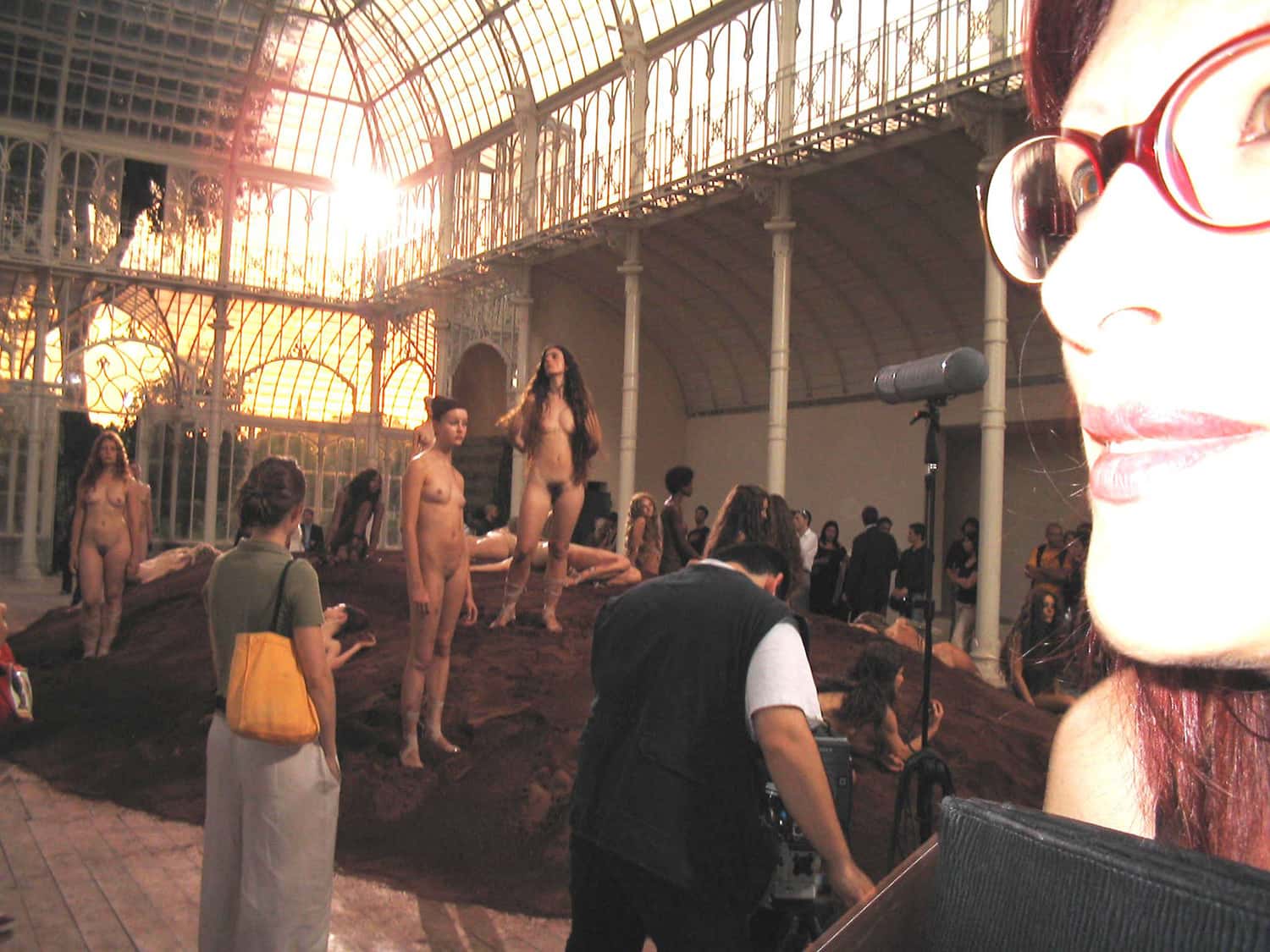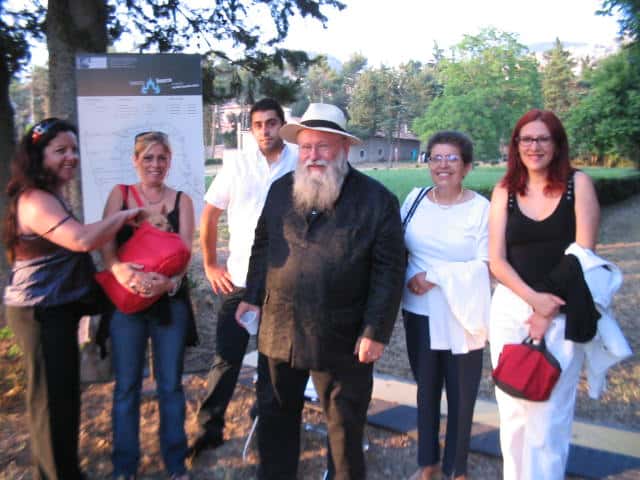Embracing the space
The founder of Primo Piano LivinGallery and renowned artist, curator, collector and art advisor Dr Dores Sacquegna tells ArtScoops how she selects works for shows and juggles her roles, while also sharing her thoughts on operating in a pandemic and the part that Middle Eastern artists are playing in highlighting turbulent times

Francesco Arena, Primo Piano LivinGallery, 2005
What first triggered your interest in art and how did you carve out your multi-faceted career path?
I was creative even as a child, growing up in a family of antique collectors. The art journey has been lengthy, but satisfying; I studied in Italy, but also abroad, immersing myself in other cultures and discovering plenty about other people. Over time, I have perfected the discipline of contemporary art, using my intuition and also the expertise I have gained from my studies. As an artist, I work in photography, engraving and environmental installations. I launched my career as a curator in 1994 and it is a job that still occupies me today. In 2004, I founded the Primo Piano LivinGallery contemporary art gallery in Lecce, where I work and organise events with national and international artists.
You are an artist, curator, collector and advisor. Do you identify with one area of work more than others and if so which?
I prefer to think of all three of them as activities I can't do without. My role as an artist gives me the opportunity to see things from different points of view. With that in mind, I always try to carry out tasks with the utmost professionalism to ensure they result in excellent events that will help me achieve my objectives in my search for art, whatever the purpose.

Samantha Stella of Corpicrudi group, Primo Piano LivinGallery, 2005
As a curator, how do you make decisions on which artists/works to feature in a show?
Before deciding on the artists and the works, I elaborate on the concept and theme of an exhibition. I study the space that has been earmarked for receiving and exhibiting the works - then I choose the art and, consequently, the artists. The point at which the works are selected is a crucial one that will determine the success of an event. It is essential that the curator knows how to enhance the space in question while proposing points of view, some of which may not always appear initially to be logical.

Vanessa Beecroft’s performance BV53, Tepidarium del Giardino dell’Orticultura, for Pitti Foundation Immagine Discovery, Florence, 2004
These are highly unusual geo/socio-political times we’re living in. What has been the impact of the external political climate on the artists and art that you’re seeing, specifically artists from the Middle East?
Art has always existed in difficult times and artists have the challenging task of finding alternative answers to raise awareness. It’s not always easy. There are activist artists in various sectors, such as those highlighting environmental issues and others calling for greater respect of cultural identities. I believe that art can relay a point of view, but when it really comes to changing things, the only people that can make that happen is us, with our behaviour, with an open mind and with a sense of respect for life. When it comes to artists of the Middle East, there are important figures who have made a great contribution to change and whose work reflects on the lines between justice and injustice, and peace and war. People like Bizhan Bassiri (Tehran), Zad Moultaka (Beirut) and Shirin Neshat (Iranian, living in New York) come to mind; however, there are many very good artists who are striving to condemn war, torture, denial of human rights, the commodification of human beings and the environment through their art.
What do you regard as your career highlights to date?
I’ve achieved many of my goals during my career so far, which spans some 25 years now, and have also carried out several projects in collaboration with public bodies and administrations in Italy and abroad, from museums, foundations and galleries to festivals, exhibitions, film and video art exhibitions. I’m now at the point of making a decision about whether to set up a contemporary art foundation or continue doing what I do.

Carlo Bernardini, Brindisi Casale Airport, 2007
As with so many industries, the Covid-19 pandemic has had a catastrophic impact on the art world. What can gallerists and curators do to respond to the challenges they face triggered by the virus, both in the immediate and for the longer term?
My colleagues in the visual arts sector feel the pressure of their finances because the Italian system lowers taxes for the ‘great tourism entrepreneurs’ and raises them for the smallest working in art. This gap is the result not only of the Covid-19 crisis, but also of a poor understanding of culture and, consequently, art. The patronage that flourished in Italy in the 1970s, thanks to large investments from banks, has almost disappeared today. In its place is the Art Bonus, which only helps those who work in the acquisition of prestigious works of ancient and modern art (up to the avant-garde of the 20th century). It does not protect those who invest and promote young talents. With the Primo Piano LivinGallery, we have always fought against this system, involving foreign institutions and recognised young artists in a dialogue between cultures and for shared work that can create partnerships and solutions to the challenges that present themselves on a daily basis. The exhibition that we should open in December at the Palmieri Foundation in Lecce - ‘Worldview: the anthropology of eco-vision’ - is an ‘activist action’ on the environment but also a form of cultural resistance to these and other Italian dynamics. A fight without clashes, but one ready to activate other energies and perspectives; a way to reduce cultural distances, at a time when there is only social distancing.

Gabriela Morawetz and Pancho Quilici, 2006
You are known to be a collector of art – what’s hanging on your walls at home?
My home features works by some of the artists I’ve collected, including: Astolfo Funes (Venezuela); Vanessa Beecroft (Italy); Yasemin Yenigün Bakiri (Turkey); Massimo Attardi (Italy); Carlos Anzola (Venezuela); Marthe Keller (US); Pam Longobardi (US); Xiao Lu (China), Kamalky Laureano (Mexico); Gabriela Morawetz (France); Gönül Nuhoğlu (Turkey); and Sama Alshaibi (Iran).

Rita and Hermann Nitsch (with Primopiano LivinGallery staff) in Certosa of Padula, 2006